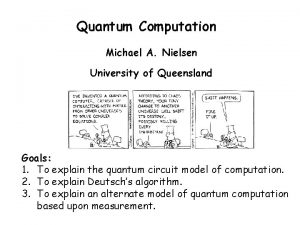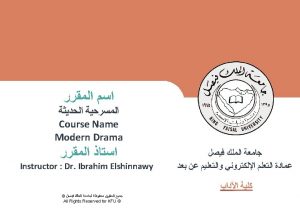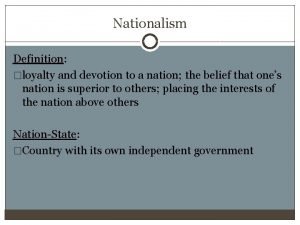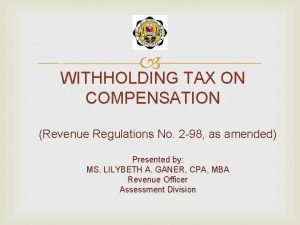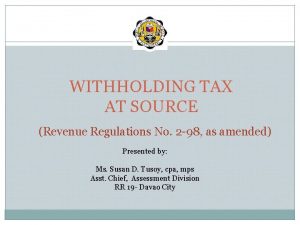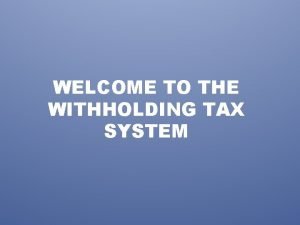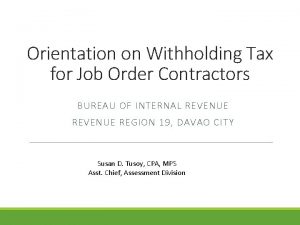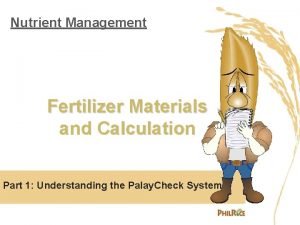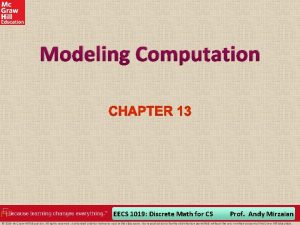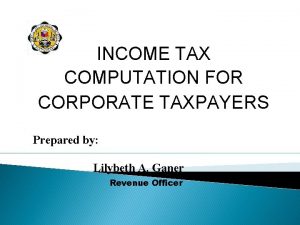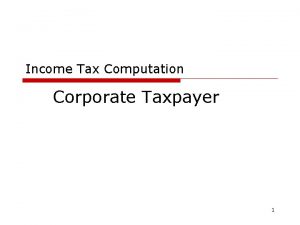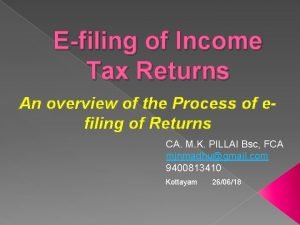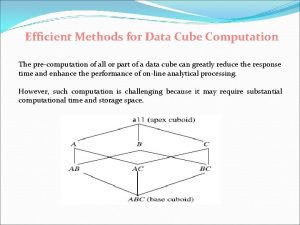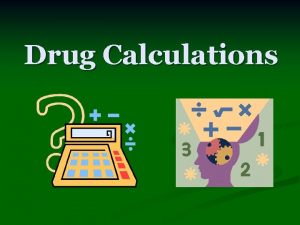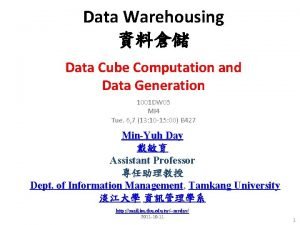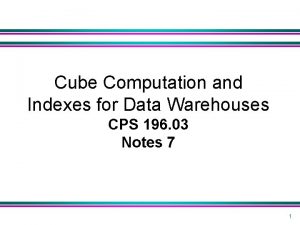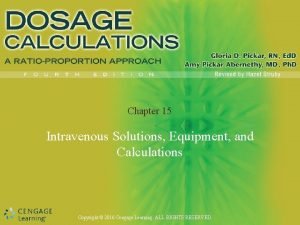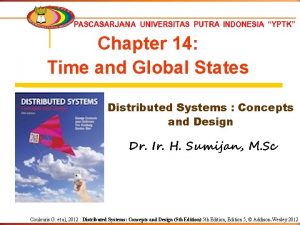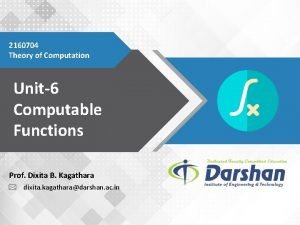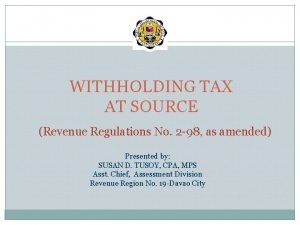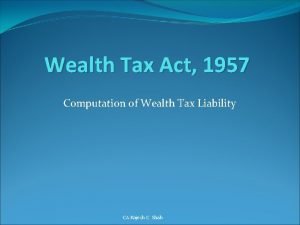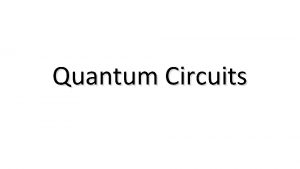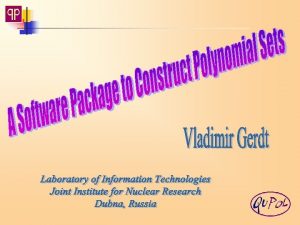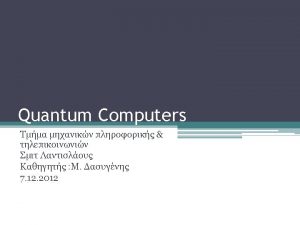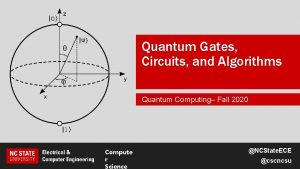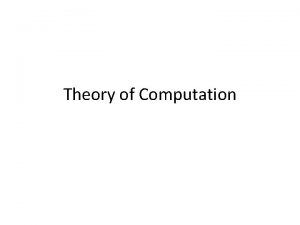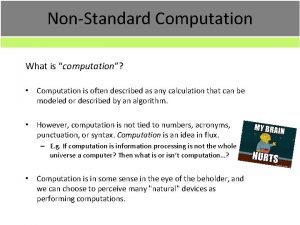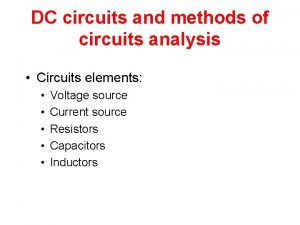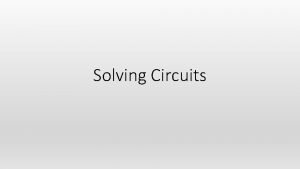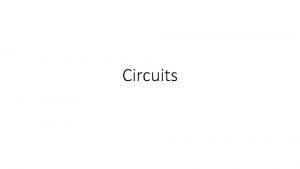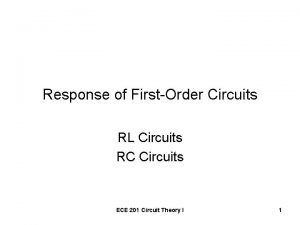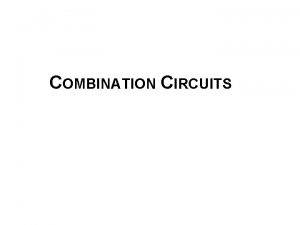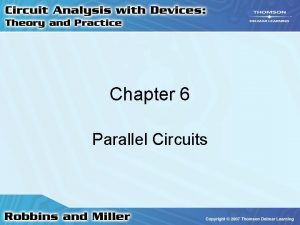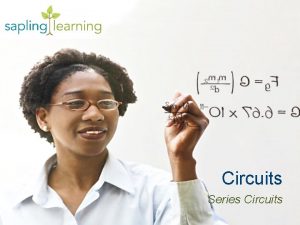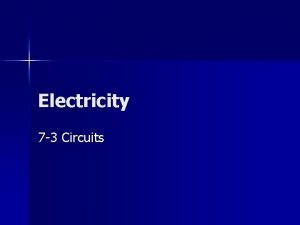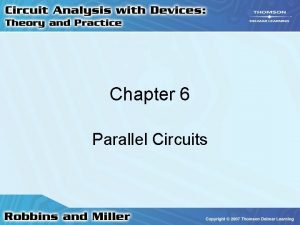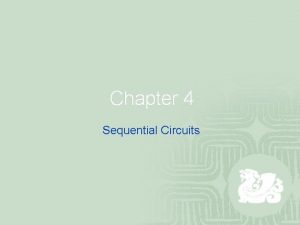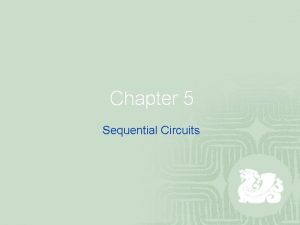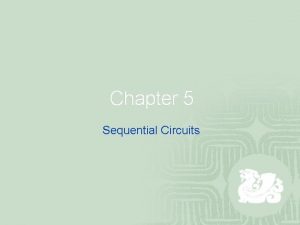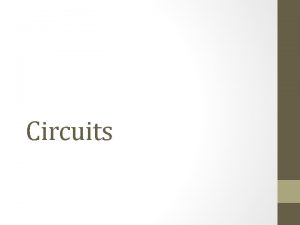Quantum Computation towards quantum circuits and algorithms Michael

























- Slides: 25

Quantum Computation – towards quantum circuits and algorithms Michael A. Nielsen Goals: 1. To explain the quantum circuit model of computation. 2. To explain Deutsch’s algorithm. 3. To explain an alternate model of quantum computation based upon measurement.

What mean to does it compute?

What does it mean to compute? Church-Turing thesis: An algorithmic process or computation is what we can do on a Turing machine. Deutsch (1985): Can we justify C-T thesis using laws of physics? Quantum mechanics seems to be very hard to simulate on a classical computer. Might it be that computers exploiting quantum mechanics are not efficiently simulatable on a Turing machine? Violation of strong C-T thesis! Might it be that such a computer can solve some problems faster than a probabilistic Turing machine? Candidate universal computer: quantum computer

The Church-Turing-Deutsch principle: Any physical process can be efficiently simulated on a quantum computer. Research problem: Derive (or refute) the Church. Turing-Deutsch principle, starting from the laws of physics.

Models of quantum computation There are many models of quantum computation. Historically, the first was the quantum Turing machine, based on classical Turing machines. A more convenient model is the quantum circuit model. The quantum circuit model is mathematically equivalent to the quantum Turing machine model, but, so far, human intuition has worked better in the quantum circuit model. There also many other interesting alternate models of quantum computation!

Quantum circuit model and equivalence operations on symbolic unitary matrices

Quantum circuit model Quantum Classical Unit: bit Unit: qubit 1. Prepare n-bit input 1. Prepare n-qubit input in the computational basis. 2. Unitary 1 - and 2 -qubit quantum logic gates 3. Readout partial information about qubits 2. 1 - and 2 -bit logic gates 3. Readout value of bits External control by a classical computer.

Single-qubit quantum logic gates Pauli gates Hadamard gate Phase gate =

Controlled-not gate CNOT is the case when U=X Control U Target Controlled-phase gate Z = Z Z Symmetry makes the controlled-phase gate more natural for implementation! = X H Z H Exercise: Show that HZH = X.

Toffoli gate Now we are using Dirac notation to be used to complex problems Control qubit 1 Control qubit 2 Target qubit Worked Exercise: Show that all permutation matrices are unitary. Use this to show that any classical reversible gate has a corresponding unitary quantum gate. Challenge exercise: Show that the Toffoli gate can be built up from controlled-not and single-qubit gates. Cf. the classical case: it is not possible to build up a Toffoli gate from reversible one- and two-bit gates.

How to compute classical functions on quantum computers Use the quantum analogue of classical reversible computation. The quantum NAND Classical circuit The quantum fanout Quantum circuit

Removing garbage on quantum computers Given an “easy to compute” classical function, there is a routine procedure we can go through to translate the classical circuit into a quantum circuit computing the canonical form. The issue is, “how efficient? ”

Example of using symbolic Dirac Notation: Deutsch’s problem

Example: Deutsch’s problem Classical black box Quantum black box

Putting information in the phase Phase is propagated to inputs and hidden in them Putting information in the phase is a very important trick of quantum computing Observe that this is counterintuitive with notions how signals are propagated in circuits F(x) can be multi-bit function

Quantum algorithm for Deutsch’s problem H H Quantum parallelism Research problem: What makes quantum computers powerful?

Auxiliary slides

Universality in the quantum circuit model Classically, any function f(x) can be computed using just nand fanout; we say those operations are universal for classical computation. Suppose U is an arbitrary unitary transformation on n qubits. Then U can be composed from controlled-not gates and single-qubit quantum gates. Just as in the classical case, a counting argument can be used to show that there are unitaries U that take exponentially many gates to implement. Research problem: Explicitly construct a class Un of unitary operations taking exponentially many gates to implement.

Summary of the quantum circuit model QP: The class of decision problems solvable by a quantum circuit of polynomial size, with polynomial classical overhead.

Quantum complexity classes How does QP compare with P? BQP: The class of decision problems for which there is a polynomial quantum circuit which outputs the correct answer (“yes” or “no”) with probability at least ¾. BPP: The analogous classical complexity class. Research problem: Prove that BQP is strictly larger than BPP. Research problem: What is the relationship of BQP to NP?

When will quantum computers be built?

Alternate models for quantum computation Standard model: prepare a computational basis state, then do a sequence of one- and two-qubit unitary gates, then measure in the computational basis. Research problem: Find alternate models of quantum computation. Research problem: Study the relative power of the alternate models. Can we find one that is physically realistic and more powerful than the standard model? Research problem: Even if the alternate models are no more powerful than the standard model, can we use them to stimulate new approaches to implementations, to error-correction, to algorithms (“high-level programming languages”), or to quantum computational complexity?

Overview: Alternate models for quantum computation Topological quantum computer: One creates pairs of “quasiparticles” in a lattice, moves those pairs around the lattice, and then brings the pair together to annihilate. This results in a unitary operation being implemented on the state of the lattice, an operation that depends only on the topology of the path traversed by the quasiparticles! Quantum computation via entanglement and singlequbit measurements: One first creates a particular, fixed entangled state of a large lattice of qubits. The computation is then performed by doing a sequence of single-qubit measurements.

Overview: Alternate models for quantum computation Quantum computation as equation-solving: It can be shown that quantum computation is actually equivalent to counting the number of solutions to certain sets of quadratic equations (modulo 8)! Quantum computation via measurement alone: A quantum computation can be done simply by a sequence of two-qubit measurements. (No unitary dynamics required, except quantum memory!) Further reading on the last model: D. W. Leung, http: //xxx. lanl. gov/abs/quant-ph/0111122

• 2007
 Series parallel circuit current
Series parallel circuit current Quantum physics vs quantum mechanics
Quantum physics vs quantum mechanics Quantum physics vs mechanics
Quantum physics vs mechanics Nielsen quantum computing
Nielsen quantum computing Compare torvald and nora's attitude towards money
Compare torvald and nora's attitude towards money What word means loyalty and devotion
What word means loyalty and devotion Wtax compensation table
Wtax compensation table Expanded withholding tax computation
Expanded withholding tax computation Expanded withholding tax computation
Expanded withholding tax computation Job order tax
Job order tax Fertilizer computation philrice
Fertilizer computation philrice Eecs 1019
Eecs 1019 Sipser, m: introduction to the theory of computation
Sipser, m: introduction to the theory of computation Iaet sample computation
Iaet sample computation Income tax computation format
Income tax computation format Crystalloids
Crystalloids Individual tax computation format
Individual tax computation format Efficient methods for data cube computation
Efficient methods for data cube computation Drug computation
Drug computation Data cube computation
Data cube computation Data cube computation
Data cube computation Iv infusion calculation formula
Iv infusion calculation formula Cuts of a distributed computation
Cuts of a distributed computation 2160704
2160704 Expanded withholding tax revenue regulation
Expanded withholding tax revenue regulation Net maintainable rent
Net maintainable rent



